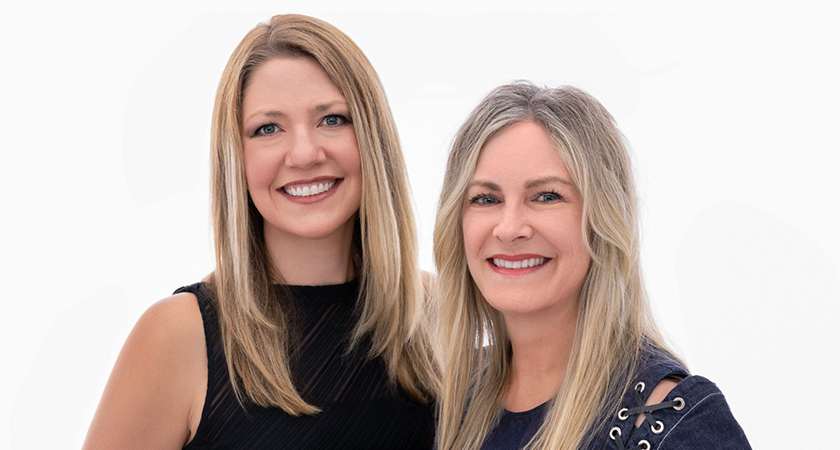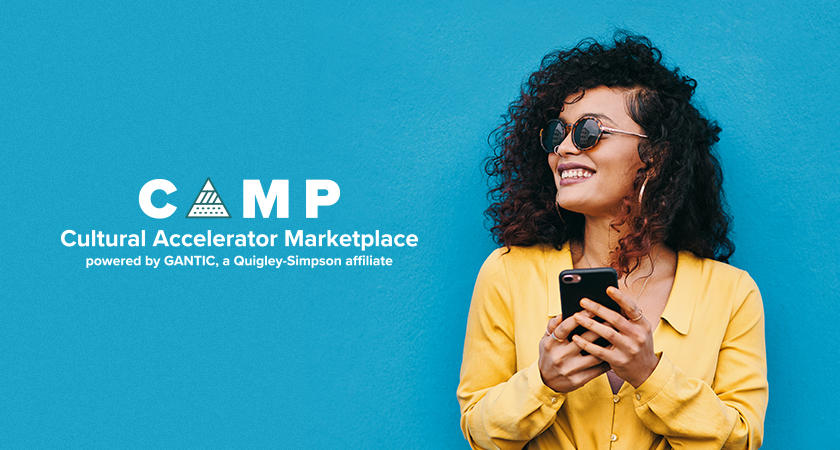IAB NewFronts was a week-long, virtual conference that gave media professionals a first look at the latest digital content, trends, and innovations. The theme this year was “living the stream,” with a focus on how brands, agencies, and creators are adapting to a world where more and more consumers are “cutting the cable.”
In the past, we would talk about the upfront, the scatter market, the DRTV landscape, and then digital. Today, we talk about audience, attention, and platform. Video is consumed across screens and platforms throughout the day. For example, YouTube was viewed on a TV by nearly 120 MM people in the U.S. in Q1. It’s now another network with contiguous dayparts that must be an anchor to any media mix.
When considering how to incorporate video into marketing efforts, brands must think about the right way to go to market. Are you going to develop your own spot? With multiple cuts? Or are you going to use the community, publishers, or influencers? Is creating a :60 spot that can be distributed across all video channels the best, most authentic way to tell your story? Or is allowing 60 different influencers to create unique videos discussing your product a better idea?
Like other media conferences we’ve attended, there was much talk at IAB NewFronts about the demise of cookies. When it happens, measurement will be challenged, but growth will continue. Attribution will be limited to last-click, and our retargeting pools will be significantly smaller. But we will start to see the rise of contextual attribution, new mix models, and new approaches to incremental/conversion-lift testing. We recommend establishing a relationship with a few measurement partners that can build solutions based on both 3PC and non-trackable signals. Then, you can compare and contrast results to develop new models.
DEI was also the focus of many sessions at IAB NewFronts. We believe the push toward DEI has been long-needed in the marketplace. The key for brands is to make the efforts authentic. We cannot simply execute as “one-and-done” ideas. Brands must commit to being open and inclusive from now on.
Here are some of the sessions we found most insightful at IAB NewFronts:
1. The latest on video
Where the leaders see audiences moving and how brands can effectively reach them.
Read more
2. Opportunities with the news
How supporting journalism allows brands to connect with their audiences while doing social good.
Read more
3. Creative inspiration
Examples of creative ad and content innovation that drives entertainment, utility, and results.
Read more
4. Perspectives on DEI
Meaningful ways brands can drive diversity, equality, and inclusion initiatives.
Read more
Video
NewFronts Opening Session
With Claire Atkinson, Chief Media Correspondent, Insider
David Cohen, Chief Executive Officer, IAB
Maria Menounos, Journalist, Author & Entrepreneur
Panelists kicked off the conference by going over some of the most significant trends and insights they’ve seen around streaming video. Key takeaways:
Digital video grew 21% last year, with five new streaming services launching and the average viewer spending 140 minutes a day consuming digital content.
It’s a great time to be a viewer, but not always the best time to be an advertiser. Attention spans are shrinking. Some of the most popular streaming networks are not ad supported.
Competition is high. Digital video now represents more than half of all video spend. YouTube saw a 50% jump in ad revenue last quarter.
Our challenge as marketers is to make sure consumers continue to have a good experience. Ad loads need to manageable. Creative must be relevant and engaging. Consumers expect conveniences like smart, one-click-away connectivity.
We need to continue to focus on ways to predict the next consumer behavior patterns and follow audiences where they’re going.
Retail Media Session—Powering Accountability
With Keith Bryan, Sr. Director, Media Business Strategy, Best Buy
Luke Kigel, VP, Integrated Media Solutions, Walgreens
Shenan Reed, SVP, Head of Media, L’Oréal USA
Orchid Richardson, Senior Vice President, Programmatic+Data Center, IAB
The desire for brands to find ways to make the best use of first-party data, and create more personalized experiences for customers, has made retail media networks more appealing. Combined with the COVID-accelerated expectation for seamless e-commerce experiences and immediate delivery, we have now the perfect setting for media that ties shopper intelligence to ad delivery—increasing accountability for advertisers. Key takeaways:
Mutual respect and shared accountability between the advertiser and the retailer make retail networks one of the safest places brands can be right now. By offering honest product information to customers, in a trusted environment, there’s an opportunity to win back consumer faith in advertising that’s been lost over the years.
There’s a lot of value in the closed-loop reporting offered by retail media networks. Brands can know the customers from the first touch to the moment they buy, and then keep the relationship going with reminders, gifts, and other incentives.
Brands can bring their own first-party data, combine it with the large amount of data the retailer has already collected about their customers, and create a win-win for both companies.
Advertising on a retail media network does not necessarily mean driving customers to the retailer’s site or store to buy the brand’s products. Some brands are finding value in using the network like any other media outlet to build awareness or drive customers to the brand site.
NewFronts Closing Session
With David Cohen, Chief Executive Officer, IAB
Katie Klein, U.S. President, Integrated Investment, PHD
Lucia Moses, Deputy Editor, Insider
Brett Richardson, Senior Media Manager, Chobani
Insider’s Lucia Moses hosted a discussion with a panel of industry thought leaders around trends that emerged from the week and their personal observations. Key takeaways:
Video has always been an important asset, but now it’s taking flight more places than ever—from your home, to your favorite retailers, to the device in your pocket. The audience is not really concerned with where they’re getting the content as much as the quality of what they’re seeing. Content is driving decisions over platform.
There are a lot of questions around measurement and privacy that we still need to answer. Marketers need to start speaking the same language. We’re looking at a very fragmented landscape. In order to survive, the new platforms will need to start addressing these issues more definitively.
Incrementality is the word that summarizes the NewFronts week. In the past, that meant starting with linear TV and building from there. Today, we should start with streaming and then expand to other places.
Shoppable commerce is an important factor to consider when evaluating new platforms. The pandemic behaviors of customers shopping from home is likely to continue.
There’s a lot of blending of companies, technologies, content, and audiences between linear and streaming video. These two marketplaces are converging, and there could be a future where there is single upfront event instead of two. However, there is value in having multiple touchpoints over the year.
News
Real News, Real Brands, Real Trust: The Brand Perspective
With John Battelle, Co-Founder & CEO, Recount Media, Inc.
Hena Doba, Host, Cheddar News
Maria Menounos, Journalist, Author & Entrepreneur
Lou Paskalis, Senior Vice President, Customer Engagement & Media Investment, Bank of America
In 2020, the importance of timely, trusted news was amplified as people sought updates related to the global pandemic, social injustice, economic uncertainty, and the election. But while news outlets experienced record viewership, advertising dollars did not match the audience growth. Panelists expressed concern because they see journalism as the source of truth that’s fundamental to our society. They challenged marketers to ask themselves how important facts are to the operation of their business.
Lou Paskalis sees tremendous brand and business value in news. He reported 10–15% more high-value engagements when advertising on news content. He also noted a significant increase in brand recall.
Panelists pointed out that younger audiences are increasingly interested in the news, bringing attention to the success of Cheddar News.
Panelist cautioned that the trust and transparency of the news source has a direct effect on marketing performance. Marketers should carefully evaluate news sources to ensure they align with the values of the brand and the customers.
Beyond advertising with the large news providers, marketers should also allocate funds to local news. This is where brands can not only make a more personal connection with audiences but have a direct social impact by supporting local journalism and helping eliminate “news deserts” in underserved markets.
Real News, Real Brands, Real Trust: The Journalists’ Perspective
With John Battelle, Co-Founder & CEO, Recount Media, Inc.
Subrata De, Executive Vice President, VICE News
Nick Sallon, Head of US News Partnerships, Twitter
Mary Wilkinson, Head of Editorial Content, BBC Global News
Panelists discussed how reporting the news has become especially challenging. They identified ways brands could take an active role in ensuring the accurate delivery of news to our communities. Key takeaways:
The cost of producing news is going up. In-depth investigation, reporting from dangerous places, and responding to misinformation are major factors driving expenses. Services like the BBC are publicly supported through licensing fees, while U.S. news sources must rely primary on advertising for revenue.
Security and safety for journalists is now an issue domestically in the U.S., having increased dramatically over recent years. This is impacting costs.
The tension between journalism and advertising has always existed. But the more unbiased the journalism, the more engaged the audience. It benefits both media outlets and advertisers to support quality journalism, even if that means sometimes releasing content that’s critical of brands.
Twitter seeks to help publishers and journalists monetize through advertising, but it is also releasing non–ad supported subscription services for new providers. In addition, the platform can offer brand safety by allowing markers to choose specific subjects and conversations they wish to join.
Creative
IAB Creative Spotlight
With Nina Munoz, Director, Media Center, IAB
During each day of the conference, Nina Munoz shared examples of innovative cross-platform ads that leverage the power of interactivity to drive results. Here are a few notable examples:
To boost ad engagement, Sonic offered viewers the opportunity to have a lower ad load on the program they were streaming if they opted in to play an interactive game. One-third of people accepted.
Comedy Central increased awareness of a new show by allowing people to watch the entire episode in a YouTube ad unit.
Nissan gave viewers the option to select whether they wanted to watch an ad in English or Spanish—and switch back and forth while it played. This boosted awareness and purchase intent. It also gave the brand a clearer view of audience language preferences.
American Eagle created a virtual store that ran as a lens in the Snapchat camera. This allowed customers to shop without leaving their houses, driving $2.1 million in sales.
DEI
DEI Discourse
With Sheryl Goldstein, Executive Vice President, Member Engagement & Development, IAB
Maria Menounos, Journalist, Author & Entrepreneur
Monique Nelson, Chair & Chief Executive Officer, UWG
Lola Ogunnaike, PeopleTV Host, Journalist, & Host of “Well-Suited” Podcast
Panelists shared a critical conversation on DEI progress across the industry and what still needs to be done. Key takeaways:
Many brands are executing DEI initiatives, but budgets are often low. There needs to be a greater investment in time, money, people, and processes to make an impact.
When thinking about DEI, brands should look at the places where they can recognize and accelerate talent but not turn it into a tokenism. Initiatives should be followed by a real effort to track and measure.
DEI is a business imperative. Corporate social responsibility (CSR) is a strategy to make it happen in a meaningful way. There needs to be buy-in at all levels of management and a 3-4 plan that becomes part of the corporate DNA.
Underserved communities are not looking for charity from brands—they’re looking for their business. Companies should focus on ways to invest in the long term versus one-off fund-raising.
Creator Partnerships: How Brand Marketers Should (and Shouldn’t) Approach Diversity
With Jason Linton, TikTok Creator
Makeda Loney, Copywriter & Poet
Lola Ogunnaike, PeopleTV Host, Journalist, & Host of “Well-Suited” Podcast
Adam W, Adam W with Made by All
Moderator Lola Ogunnaike facilitated a discussion with content creators about their experiences collaborating with brands, highlighting what works and what doesn’t. As influencer marketing matures, it’s critical to assess equity across the industry and to ensure that it benefits creators as well as brand partners. Key takeaways:
Diversity isn’t something cosmetic. Just having a certain number of people of a certain color in the content does not mean diversity. There are deeply engrained life experiences that need to be communicated. That’s what will make the content more honest and true.
Questions that creators ask before aligning with a brand: Does the brand approach the creator’s subject with authenticity and dignity? Are the products something that make a real difference in the life of the creator—does the creator actually use them? Does the brand allow creators enough freedom to be their authentic selves?
It’s important that the brand realizes the creator knows their audience best and trusts them to help guide the conversation. Content can’t be the same across every creator. Each audience is different.







